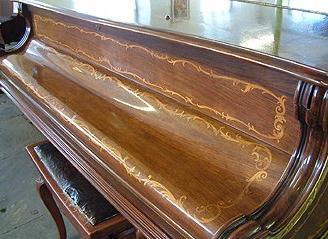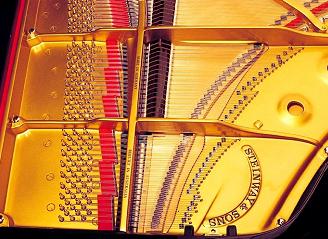
Buying a Piano
Buying a piano can be a difficult decision. Which brand, what style, best sound? Specializing in piano moves, we know the importance of your investment. Here are some tips to help you. Make sure to call McMurry Moving Company for the expertise in moving your new purchase!

BUYING NEW
In general, if you find a reputable piano retailer, buying a new piano should be no problem. The choice of piano is yours, and the amount you pay will in general determine the quality of the instrument. When you find a piano that satisfies your needs, purchase the one you have tried, as another of the same make and model could be quite different in touch and tone.
BUYING SECOND HAND
Once again, buying from a reputable retailer should not be a problem, as the piano will have been professionally restored where necessary, and it should be covered by a warranty. However, beware of poorly restored pianos, or instruments with only ‘cosmetic tidying up’ sold as’fully restored’.
Piano Moving
STRAIGHTSTRUNG OR OVERSTRUNG?
Straightstrung or Overstrung: In a straightstrung piano, the strings run parallel to one another throughout. An overstrung piano has the bass strings running diagonally across the piano, crossing over the treble strings – hence overstrung. Overstringing is preferable, as the strings are longer than is possible otherwise, and this produces a much better tone. If a straight strung overdamper piano is in good condition, it can be satisfactory, and occasionally one finds examples produced by some of the best piano manufacturers.
OVERDAMPENED OR UNDERDAMPENED?
Overdamper or Underdamper: In an overdamper action, the hammers (the action parts which strike the strings) are obscured from view (when looking into the top) by a wooden rail holding the dampers (the action parts which press on to the strings to stop them from sounding). An underdamper action has the dampers located beneath the hammers and they are usually much more effective than overdampers.

IRON FRAME AND STRINGS
Iron Frame and Strings: The iron frame can be seen most easily in the bottom of an upright piano, although it usually covers most of the area inside the piano. The strings are attached to the frame at the bottom and to the tuning pins at the top. Is there rust on the frame or strings? (top and bottom) Is the iron frame cracked? Are there cracks in the wrest plank (the wood in which the tuning pins are inserted) between the tuning pins? Are some tuning pins leaning down more than others? Are any strings missing, or have some been replaced? (New strings will be a different colour from the rest)
SOUNDBOARD AND BRIDGES
Soundboard and Bridges: The soundboard is the varnished wooden panel which can be seen underneath the strings. The bridges are lengths of wood, glued to the soundboard, into which metal pins are driven. The strings run over the bridges and between the pins. The vibration of the strings is transmitted to the soundboard by the bridges, and this produces the sound you hear.
